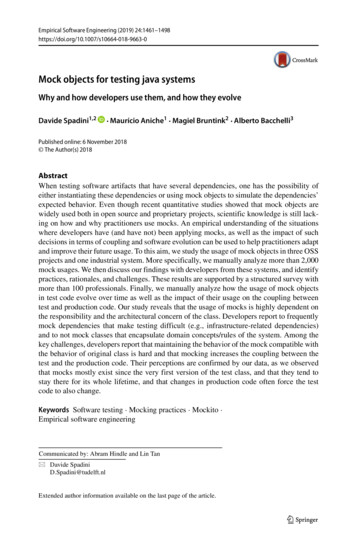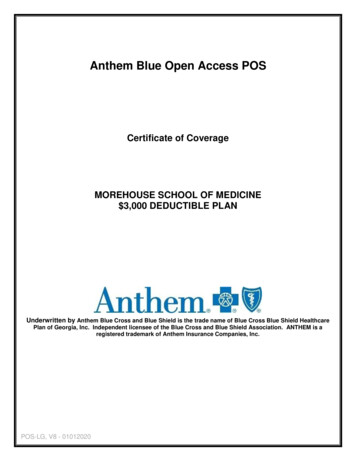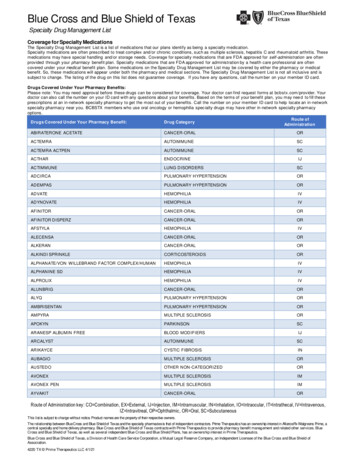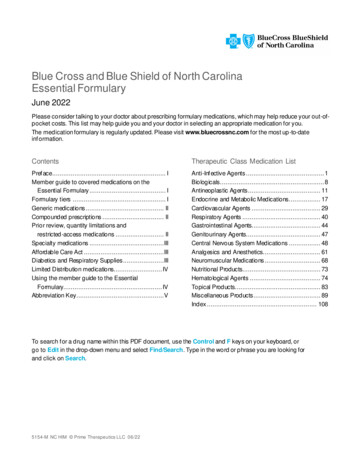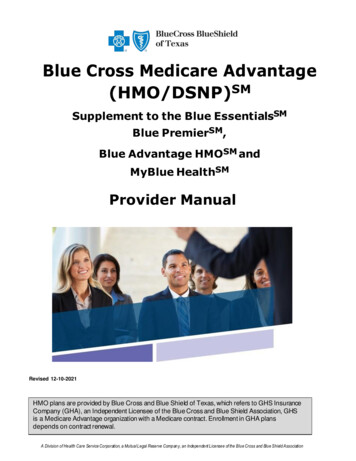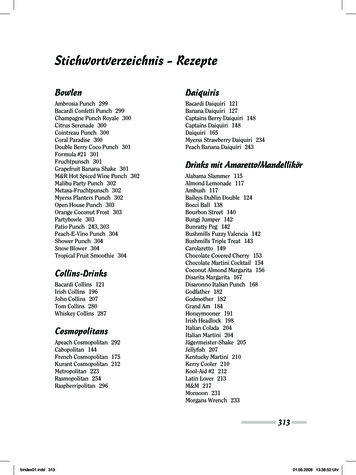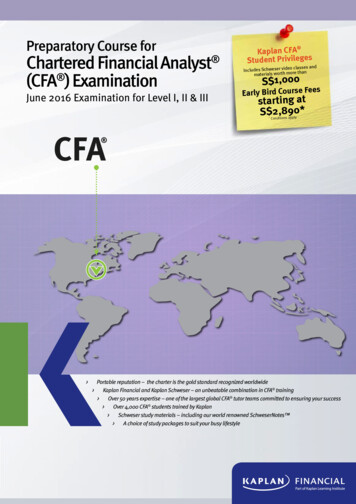
Transcription
Mock Code Blue TeachingSupplemental Education for RN Staff
Your Role in a Code Blue / White There are several roles that need to be taken inorder to provide an effective resuscitation effort.It takes a Team Effort! There are 6 Primary roles required to run aneffective resuscitation effort
Your Role in a Code Blue / White1. Team Leader, MD Physician in Charge Directs activities of the code Should be positioned at the foot of the bed2. Recorder / Timekeeper Documents actions of the code Keeps team informed of time passing (3 min since lastmedication, 2 min since last pulse check) Ensures Physicians, Primary RN, RNs, and RCPs present aredocumented as the code blue team Ideally should be positioned near the Team Leader
Your Role in a Code Blue3. Airway Management Generally an RCP but RN may assume until RCP arrives Assesses airway and ensures an adequate airway is present and assists withventilations as indicated Supplies supplemental oxygenation and ability to monitor ETCO2 whenavailable May have ability to provide advanced airway management (intubation) or mayhave secondary personnel qualified to provide advanced airway Should be positioned at head of bed4. CPR Provides effective CPR Should be positioned at patients side (chest level) opposite to doorside and where defibrillator screen is visible to use audio / visual tools
Your Role in a Code Blue / White5. Medication RN Establishes and maintains IV access Administers medications and IV fluids as ordered Should be positioned at side of bed by IV access6. Crash Cart / Defib RN Provides / prepares items and medications out of crash cart Administers shock as indicated Should be positioned at patients side by door side with crash cart andvisible to person doing CPR to see defibrillator screen
Code Blue TeamWhat’s Your Position?Airway ManagementCPRRecorderTimekeeper Documents Actionsof Code Official Timekeeper Ensures CodeRecord is Complete Obtains Signatures CompletesNotification Form Positioned Acrossfrom Defib to SeeCPR Audio/VisualTools for EffectiveCPRTeam Leader MD Physician in Charge Directs Activities ofthe code Provides AirwayManagement andRespiratory Assistance asNeeded Person Qualified to Intubateif IndicatedCrash Cart/Defib RN Hands Out Items &Medications as Needed Defibrillates When Called forMedication RN Administers IV Fluids& Medications3/16 rl
How Do You Know If Your CPR Is Effective? The R Series Defibrillators on ALL the crash carts have audio/ visual cues that let you know how you are doing. When doing CPR, make sure you are in sight of thedefibrillator and look to the “Release” box which will showdepth and the “CPR” diamond will show rate– You want to fill up the boxes during CPR to be effective– Listen for cues to speed up or slow down your rate or pushharder! Did ya know .you can now visualize the underlying rhythmof the patient WHILE doing CPR!
CPR FeedbackWindowGoal: Fill theBoxesUnderlying Rhythm
CapnographyAs an assessment tool during CPR, capnography canhelp the ACLS provider determine a number of things. It is a direct measurement of ventilation in the lungs, and italso indirectly measures metabolism and circulation.Normal ETCO2 in the adult patient should be 35-45 mmHg. For example, a decrease in perfusion (cardiac output) willlower the delivery of carbon dioxide to the lungs.High quality chest compressions are achieved when theETCO2 value is at least 10-20 mmHg.
Capnography ToolsZOLL ETCO2 cableEMMA portable ETCO2monitor.Will be carried by RCP forRapid Response andCode Blue calls
You Are The Recorder NEW Code Blue / Rapid Response Narrator You can practiceWatch the video and record the events as if you are the recorder forthis codehttps://www.youtube.com/watch?v U1zq4T7MEWw Use closed loop communication Debrief after each code
CapnographyCapnography can help the ACLS provider determine anumber of things. It is a direct measurement of ventilation in the lungs, and it alsoindirectly measures metabolism and circulation.Normal ETCO2 in the adult patient should be 35-45 mmHg. For example, a decrease in perfusion (cardiac output) will lower thedelivery of carbon dioxide to the lungs.High quality chest compressions are achieved when theETCO2 value is at least 10-20 mmHg.EMMA – Portable ET CO2 monitorRCP will bring to code blue
Code Blue TeamWhat’s Your Position?1. CPR6. Team Leader MD5. Recorder/Timekeeper DocumentsActions of Codein CodeNarrator OfficialTimekeeper Ensures CodeRecord isComplete Physician in Charge Directs Activities ofthe code Positioned Acrossfrom Defib to SeeCPR Audio/VisualTools for EffectiveCPR2. Airway Management Provides AirwayManagement and RespiratoryAssistance as Needed Person Qualified to Intubate ifIndicated3. Crash Cart/Defib RN Hands Out Items &Medications as Needed Defibrillates When Called forPrimary Nurse Stay in Room to AnswerQuestions & Free fromTasks During the Code4. Medication RN Administers IV Fluids& Medications3/16 rl
5. Medication RN Establishes and maintains IV access Administers medications and IV fluids as ordered Should be positioned at side of bed by IV access 6. Crash Cart / Defib RN Provides / prepares items and medications out of crash cart Administers shock as indicated Should be positioned at patients side by door side with .

